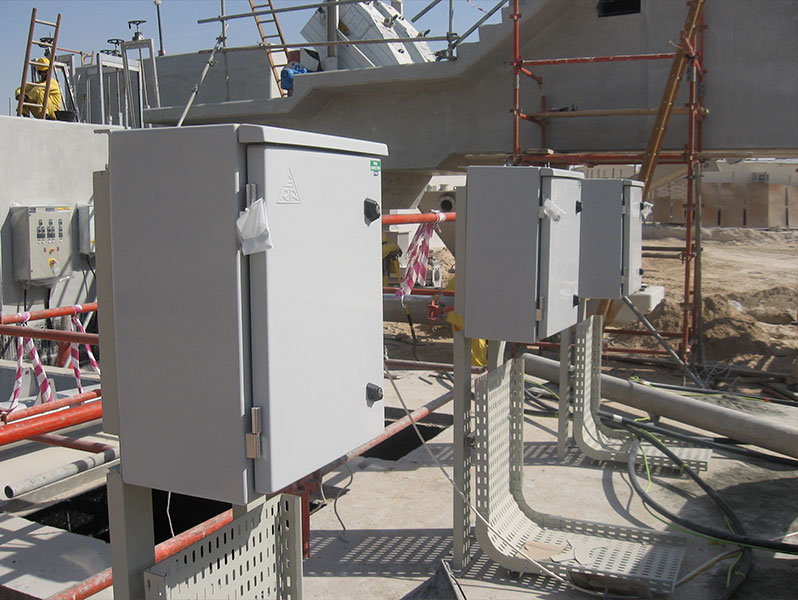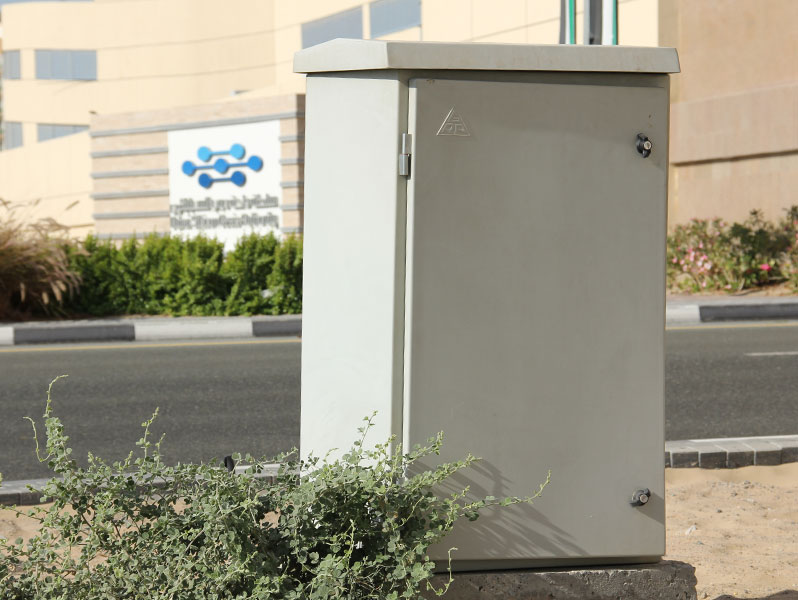Why do GRP Industriesʼ enclosures offer better protection and durability than Sheet Moulding Compound (SMC) enclosures?

Advanced composite materials can offer a range of advantages, which have made them desirable in many high-performance applications. High-performance composites consist of a matrix material reinforced by layers of aligned fibers that give composites excellent structure properties, but also make them inherently complex to manufacture as they must be built up layer by layer. The manufacturing processes we utilize at GRP Industries are known as contact moulding, injection moulding and vacuum infusion. They involve manually laying down individual layers or ‘pliesʼ of a form of reinforcement.
This consists of thousands of glass fibers, which are impregnated with resin and bundled into rows and arranged either in a single unidirectional ply or bidirectionally. The layup process involves manipulating each ply into shape by hand and then bonding to the previous layer or mould surface leaving no air pockets between plies.
These processes can produce structurally strong complex features, have relatively low start-up costs, and are highly adaptable to new parts and design changes. As with other manual processes, there is also the potential for marginal discrepancies between parts caused by human variation, however in the industrial application of enclosures the marginal variations do not impact the utility of this product range. The advantages of adaptability and quality provided by these manual skilled processes has allowed them to remain a global practice in the composite industry, and the main manufacturing methodology at GRP Industriesʼ manufacturing facilities.
As part of our standard product testing, we analyzed SMC enclosures installed outdoors in the U.A.E for weather resistance and durability. These tests revealed SMC enclosures begin to deteriorate within a period of 6 - 12 months; causing the impregnated glass fibers to be exposed on the external surface. This is due to the high temperatures, which can exceed 50ºC, and the sand blasting effect prevalent in the Middle East. Once the glass fibers become exposed to the elements, the rate of deterioration multiplies and the life of the product is severely compromised along with the enclosureʼs primary function of protection. (Shown below is a SMC enclosure installed in Sharjah, U.A.E)
Enclosures manufactured by contact moulding, injection moulding or vacuum infusion do not experience the accelerated rate of deterioration as SMC enclosures. This is due to a protective layer on the external surface of GRP Industriesʼ enclosures, also known as Gelcoat. Contrary to protective paints, Gelcoat is not applied onto the products but bonded as a layer with the other reinforcement plies in the manufacturing process.
For comparison simplification, protective paints are applied at the final stage of a product; but Gel Coating occurs in the first stage of our moulding processes.
The Gelcoat layer acts as the primary defense against harsh weather conditions and protects the impregnated glass fibers behind it that provide the structural strength to the product. Some SMC enclosures may have Gelcoat, however due to manufacturing limitations the thickness of Gelcoat is limited to 50 - 75 microns. Contrarily, GRP Industriesʼ enclosures have a standard thickness of 350 - 400 microns; with options to increase if so desired. This 350 - 400 microns Gelcoat thickness standard is based on our 28 years of product testing in the Middle East to determine the optimal specifications for weather resistant and durable protective enclosures. (Shown below are GRP Industriesʼ enclosures installed in the Middle East over a period of 10 years)

 Enclosures
Enclosures Kiosks
Kiosks Battery Enclosures
Battery Enclosures Instrumentation Products
Instrumentation Products Fire and Safety Enclosures
Fire and Safety Enclosures Roofing Systems Products
Roofing Systems Products Utility Approved Enclosures
Utility Approved Enclosures Customized Products
Customized Products





